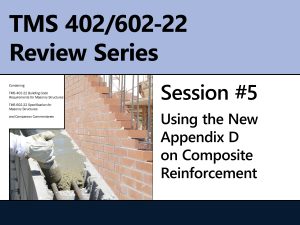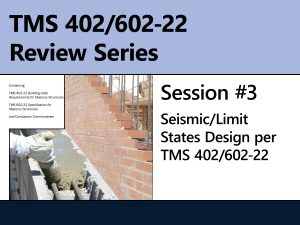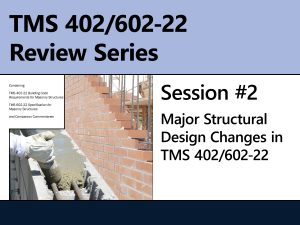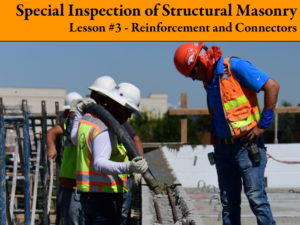
TMS 402/602-22 Review #5: Using the New Appendix D on Composite Reinforcement in Masonry
Glass Fiber Reinforced Polymer (GFRP) reinforcement in concrete was first introduced over 25 years ago by way of ACI 440R, but prior to TMS 402/602 2022, no companion guidelines existed for masonry construction. The new Appendix D of TMS 402/602 is a first standard in the U.S.…





